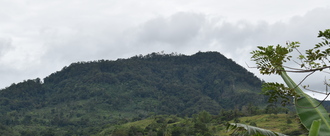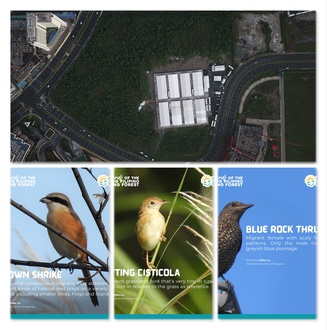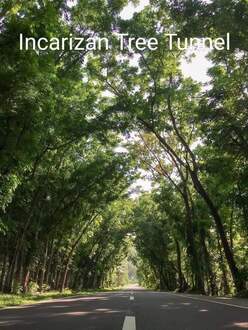-
The Sierra Madre Covenant: It is NOW Our TurnThe Call for Protection The tragedies in our archipelagic neighbors serve as a dire warning we can no longer ignore. Cebu has shown us the unprecedented tragedy of uncontrolled floods, resulting in widespread loss of lives and properties. This reality could soon become our own. We in Luzon have been constantly shielded by the Sierra Madre Mountain Range—a natural fortress that has served as our primary defense against typhoons and the cascading effects of climate change. But this protection has come at a cost. The shield is weakening. Just as we were protected by Her, now it is our urgent turn to protect the Sierra Madre Mountain Range.209 of 300 SignaturesCreated by Protect Sierra Madre Movement
-
Protect Biodiversity and Indigenous Land: Stop Palm Oil Plantation in Negros OccidentalProtecting biodiversity and Indigenous land in Candoni, Negros Occidental is crucial not only for the well-being of the local ecosystem, but also for the preservation of the cultural heritage and livelihood of Indigenous Peoples who have cared for these lands for generations. The ongoing palm oil project threatens to destroy critical forest areas, pollute water systems, displace farming communities, and exhibits blatant disregard of the law. These lands are home to unique plant and animal species, many of which may not survive the rapid environmental changes caused by deforestation, soil erosion, and siltation. Moreover, the lack of proper consultation with Indigenous communities violates their rights and disregards their role as stewards of the land. We call on all Negrenses to stand with the people of Candoni by joining our campaign and remaining vigilant in defending our environment and indigenous people. Now more than ever, we need collective action to hold destructive projects accountable and to demand that development respects both ecological balance and human dignity. Let us come together to protect what remains of our forests, rivers, and ancestral domains—for the future of our children, our communities, the people, and the planet.480 of 500 SignaturesCreated by Joshua Villalobos
-
Save Tabon Cave and Lipuun Point in Panitian Quezon Palawan PhilippinesTo have change and protect it to the invader and personal interest of other people. It must be for Municipality of Quezon , and it must be for the tribes surrounded it. And supervise by Province of Palawan Philippines.1 of 100 SignaturesCreated by Gary Gabinete

-
Opposition to the cutting of trees (Calingao to Atlas) for road widening and beautification projectsThe people should join me because I am not doing this only for myself but for our children and our children's children.65 of 100 SignaturesCreated by Candice Lauren De Asis - Luna
-
Protect Boracay's Main Water Source and Save Panay's Last Low-lying Forest!Rationale The Northwest Panay Peninsula Natural Park (NPPNP) is a vital rainforest area that urgently requires intervention to halt wind turbine construction. PhilinCon has emphasized the need for sustainable development within NPPNP, highlighting the importance of balancing progress with biodiversity preservation. However, the Nabas Wind Power Project Phase Two (NWPP-2) threatens NPPNP's biodiversity, watersheds, and communities in impact zones. We question the continued disregard for environmental mandates within the protected area. While green energy is crucial for sustainability, we must not ignore the substantial environmental toll it may take. Republic Act No. 11038, the ENIPAS Law, aims to protect forest areas, allowing renewable energy development within them with stringent safeguards. Project Briefer The NWPP is a renewable energy project by PetroWind Energy, Inc. (PWEI). The company was granted the Wind Energy Service Contract No. 2009-09-002 located in the north-western section of Panay Island with an area consisting of 2,025 hectares. Following Environmental Impact Assessment (EIA) requirements, PWEI was then granted an Environmental Compliance Certificate (ECC) No. ECC-RC-1205-132-4220, dated 01 June 2012, as amended on September 2013, 09 December 2013, 17 February 2021, and 29 March 2021, respectively. The NWPP-1 consists of 18 wind turbines (WTG 1 to WTG 18) with a total power production capacity of 36MW, transmission lines, internal access roads, and a control station located in the barangays of Pawa, Rizal, and Unidos in Nabas and Brgy. Napaan in Malay. Following guidelines mandated by the ENIPAS law, the project was allowed in the NPPNP through PAMB Resolution No. 2014-3 and granted by DENR Region VI with a Special Use Agreement on Protected Areas (SAPA) Application No. A0265DD2BFD107DC last 17 February 2023. From this, the NWPP-2 would involve six additional wind turbines (WTG 20 to WTG 25) with an expected total power generating capacity of 14MW located within the northern boundary of the NPPNP under the jurisdiction of Brgy. Pawa in Nabas and Brgy. Napaan in Malay. Environmental Impacts & Issues 1. Site Inspections Compelling evidence from joint inspections by LGU Malay and Aklan Trekkers revealed the distressing presence of siltation and sedimentation in the Daeamuan River followed by an environmental audit with Protect NPPNP Coalition that exposed that the ongoing constructions of the road network and platforms for the initial three wind turbines in Pawa, Nabas, Aklan have already created conditions conducive to substantial siltation in both Napaan and Nabaoy river watersheds. Notably, the landscape bore witness to extensive tree cutting, improper earth balling practices, conspicuous bulldozing, inefficient earth canals, and ineffective/unfinished/damaged gabions, all signaling the potential disruption of natural water flow and the broader ecosystem. 2. Water Potability & Economic Impact The effects have already damaging impacts on the water quality downstream from the NWPP-2 construction areas. As previously demonstrated, the failure to implement measures preventing heavy siltation and downstream accumulation has caused substantial harm to the entire river ecosystem. It has resulted in muddy water affecting not only Napaan and Nabaoy but also extending to the surrounding communities of Argao, Cubay, and Motag, as well as other coastal communities near these rivers. 3. EIA, ECC, & SAPA The recent Environmental Performance Report and Management Plan (EPRMP), serving as the primary EIA document alongside the Environmental Impact Statement (EIS) crafted by PWEI in September 2018, aimed to comprehensively evaluate the impact of the then-proposed NWPP-2. However, upon a thorough examination of these reports, a notable deficiency emerged – a failure to foresee the potential repercussions on neighboring areas and an absence of robust mitigation strategies. The situation in Napaan epitomizes this issue, where although mitigation measures were presented, they have failed to adequately address the current challenges, leaving the area in its current compromised state. The EIA report and ECC have limitations, failing to address extensive impacts and mitigation strategies. Amendments to ECC beyond the allowed timeframe raised concerns about document legitimacy. Agreements also failed to mention impact site areas like the Nabaoy River Watershed. Furthermore, Nabaoy was notably absent from the SAPA agreement furnished by the PAMB. In PAMB Resolution 2014-03, titled 'Resolution Approving the Project Proposal of Petrowind Energy, Inc. (PWEI) in the Northwest Panay Peninsula Natural Park for its Nabas Wind Power Project – Phase 2,' the project's area description was exclusively limited to Pawa in Nabas. Current Status Nabaoy passed a resolution complaining about the direct impacts of the initial road construction and requested SB Malay revocation of the resolution (2021) endorsing NWPP-2 due to its adverse impacts on water supply and decreased quality of community life. SB Malay also conducted committee hearings to repeatedly review and assess the environmental impacts of the project. The committee found inconsistencies and problems with PWEI's documents, leading to resolutions revoking prior endorsements and urging DENR to cancel the SAPA as follows: RESOLUTION NO. 140-A, Series of 2023 RESOLUTION NO. 140-B, Series of 2023 RESOLUTION NO. 140-C, Series of 2023275 of 300 SignaturesCreated by PhilinCon Panaycon

-
Let's Save Palawan's Forests!Palawan is our only and last ecological frontier, known for its lush primary forests and rich biodiversity. It has 105 out of the 475 threatened species in the Philippines. Based on the IUCN classification, 105 are endangered, and 67 are endemic to the Philippines. Palawan's forest also provides ecosystem services that benefit the vast communities in Palawan and extend to the whole country by acting as a significant carbon sink. Yet, mining operations, monocrop plantations, and ill-planned infrastructure projects have degraded Palawan's forests for the longest time. The women, youth, farmers, fishers, indigenous peoples, and residents of Palawan once again join hands to call on the national government and local government to save Palawan's forests by upholding laws that are supposed to protect Palawan's natural forests and stop the issuance of permits, clearances, and legal instruments that the continued destruction of Palawan's forests.2,706 of 3,000 SignaturesCreated by Sophia Caralde
-
Uphold the Ban! Protect Tampakan!We strongly condemn the railroading of the amendment of the Environment Code of South Cotabato, specifically the lifting of the ban on Open-Pit Mining. The Sangguniang Panlalawigan of South Cotabato did not consider the magnitude of the effects their actions have on the people and the environment, not only in South Cotabato. With this action alone, it will affect multiple watersheds of South Cotabato, Sultan Kudarat, Maguindanao and Davao del Sur. Further, it will also threaten the ecological integrities of Allah Valley (102,000 hectares) in Sultan Kudarat, the watershed of the Padada River (120,000 hectares) in Davao del Sur, and the watershed of the Marbel River (122,000 hectares) in the Province of Cotabato. Watersheds are geographical ecological units, and what happens in one part of the watershed will influence the whole watershed from forests, agricultural, urban, and coastal to estuarine ecosystems due to its geomorphological characteristics, connected rivers and tributaries at the surface, and including groundwater reserves. Open-Pit or Strip Mining is a metallic mining method assessed as one of the most extensively difficult to mitigate and manage; its impacts do not focus on one contained area. It also requires mass deforestation and removing 20-30 meters of the laterite zone to access the metallic resources underneath. This large-scale industry demands enormous hectares of land for operational processes from stripping, extraction, and tailings treatment, to ship loading and refinery. Furthermore, the Tampakan Open-Pit Mining will demand and use groundwater resources and transport highly toxic wastewater through a 150-km pipe from the Municipality of Malalag draining to Davao Gulf. There is a treatment process presented, however, the risks of overland flow, flooding disasters, or possible collapse of tailings ponds will inevitably impair marine and aquatic biodiversity, fish stocks, and aquaculture in the coastal areas, similar to the incident in Mapagba River in Banaybanay last January 2022. The Open-Pit Mining in Tampakan will hugely affect the long-term viability and sustainability of these watersheds that currently provide ecological services and natural resources to the people of South-Central Mindanao. The Tampakan Open-Pit Mining will become the largest mining in Southeast Asia. According to the project information, it is estimated to extract 2.94 billion tons of metallic resources, 15 million tons of copper, and 17.6 million ounces of Gold. According to S&P Global Market, Open-Pit mining emits a vast amount of greenhouse gases than underground mining methods. On average, copper mining emits 2.3-2.5 tons of Carbon Dioxide (CO2) per ton of metal and nearly 1 ton of CO2 emitted per ounce of gold produced. Combining both Copper and Gold extractions, it is estimated that around 55 million tons of CO2 will be added to the country’s greenhouse gas contribution. Hence, this is ironic to our country’s commitment during the United Nations Climate Change Conference (COP26) in Glasgow that said it is moving ahead with urgency in cutting greenhouse gas emissions and committed to reducing its emissions by 75% in 2030.620 of 800 SignaturesCreated by Interfacing Development Interventions for Sustainability Inc.

-
Demolish illegal resorts, structures in Marikina Watershed!The Upper Marikina River Basin Protected Landscape is Metro Manila and Rizal Province's natural defense against the climate crisis, increasing flooding and landslides, and the loss of clean water. Despite many laws and policies that protect it from exploitation since 1904, the failure of environmental enforcement has led to a disappearing forest cover of only 11%, based on an ongoing study. If this continues, scientists predict that the watershed will only have 5% forest cover left and will ultimately lose its ability to protect Filipinos from impending disasters. Habitats of endangered trees, birds, and other biological heritage will also be destroyed.920 of 1,000 SignaturesCreated by Save Masungi Movement
-
Save Makabol Forest and Watershed in Brgy. Salaysay, Davao CityMakabol Forest and Watershed has sustained hundreds of residents for several decades already. It is also a habitat of thousands of Flora and Fauna which includes the critically endangered Philippine Eagle and other avifauna, mammals, reptiles, amphibians, invertebrates, sapling vegetation which relies on emergent dipterocarp trees and many many more. This forest is a metaphor of life and Davao City has renowned banner "Life is Here", so let it be sustained by protecting this forest and watershed. Additionally, Davao City has comprehensive watershed management code, which is totally the best if not the only option to protect this forest even if it is privately owned. Please help us with this cause and support the revocation of the logging permit. Please sign the petition and together let us save Makabol Forest and Watershed for our future generation.1,722 of 2,000 SignaturesCreated by Benito Anthony Pingoy
-
Sagipin ang Ating Nayon!DOT, National Task Force Against Covid, and Enrique Razon of ICTSI want to make use of Nayong Pilipino Foundation urban park in Entertainment City in Parañaque for a proposed Mega Vaccination center. They say it is urgent and that the NPF board needs to sign an agreement as soon as possible. The NPF board is still waiting for detailed plans of the mega vaccination site, as it has raised concerns for the growing ecosystem in the urban park. The NPF board also raises legal concerns about the involvement of a private entity - ICTSI Enrique Razon. What is the need for the NPF urban park and green open space, when there are other existing spaces for inoculation? Since vaccination is urgent, it is more efficient to use existing structures to administer vaccination in Metro Manila. Coliseums, universities, and parking lots are excellent venues for vaccine drives. Contrary to what the DOT and ICTSI have been saying, the NPF land is not a vacant lot but has a thriving green space that hosts a variety of urban wildlife and is the last remaining grassland in the reclaimed area of Parañaque. The site is a bird flyway network and is close to the Las Piñas-Parañaque Critical Habitat and Ecotourism Area or protected wetlands under the Ramsar Convention, to which the Philippines is a signatory. See wildlife of NPF urban park here: http://nayongpilipino.gov.ph/the-birds-of-nayong-pilipino-healing-forest/ The cutting of almost 500 trees and other site works would "kill the existing ecosystem. Once lost, it could take decades to recover this ecosystem. A mega-vaccination facility that will destroy this ecosystem would be a disaster and a disservice to the residents of Metro Manila who need more green and open spaces. Our alliance is seeking transparency on the need for such a development. We also ask for Ground activities not to take place until a MOA between NPF and a government entity has been completed, and not between ICTSI. The MOA must specifically say that it is only a temporary facility that must be removed after the proposed 300 days. The MOA must also state that the ecosystem is considered in the design, and the size should just be proportionate to the needs of the facility. Private Entities Cannot Use Government Land The Nayong Pilipino Creative and Cultural Hub is owned by the Nayong Pilipino Foundation, a Government-Owned and Controlled Corporation under the Department of Tourism. It has its own charter and mandate. There is no official, written agreement between the NPF, DOT, IATF, and any private entity regarding its conversion into a mega-vaccine facility. The legality of this conversion must be reviewed against Presidential Decree No. 1445 the Government Auditing Code of the Philippines so as to ensure that this public property will not be land-grabbed. Even Architect and Urban Planner Felino “Jun” A. Palafox of Palafox Associates, was engaged by ICTSI Foundation to design the proposed mega-vaccination center. Palafox has voiced his reservations on the construction of a Mega-Vaccination facility at the NPF Creative and Cultural Hub because: 1.) The land cannot handle medical waste and 2.) It would require the removal of more than 450 trees onsite. We must save the Nayong Pilipino Creative and Cultural Hub as an urban, green, and open space. This is not about choosing trees over people's lives. People need trees to thrive, not the other way around. Metro Manila needs more green spaces. And if we truly want to end the pandemic, biodiversity matters now more than ever.577 of 600 SignaturesCreated by Alyansa ng Bagong Nayon Natin

-
Save Incarizan Tree TunnelTrees are important, it took a lot of years for them to grow and they will not be easily replaced even if we plant new seedlings because of Frequent Typhoons coming in Bicol Region.2,194 of 3,000 SignaturesCreated by Carmela Diane Doma

-
STOP the mining operations of Austral-Asia Link Mining Corporation and Hallmark Mining CorporationWe the Church people together with the farmers, fisherfolks, youth, professionals, the academe of Davao Oriental together with our national and international advocates hereby urge Hon. Roy Cimatu, DENR Secretary, TO STOPTHE MINING OPERATIONS NOW AND TO REVOKE ANY MINING AGREEMENTS WITH AUSTRAL ASIA LINK MINING CORPORATION AND HALLMARK MINING CORPORATION BOTH UNDER THE ASIATICUS MANAGEMENT CORPORATION (AMCOR) IN MAGUM, PUJADA BAY AND SALINGCOMOT, MATI CITY, PROVINCE OF DAVAO ORIENTAL. We are also against any large-scale mining activities in the whole province of Davao Oriental, as they are apparently detrimental to nature. The Mineral Production Sharing Agreement (MPSA) was issued on June 8, 2004; hence, in 2020 they have been mining for 16 years already and still have 9 more years before the twenty- five years agreement expires! During these sixteen (16) years of mining operations, the residents of the localities have witnessed the deteriorating conditions wrought by the mining lodged between two protected areas: MT. HAMIGUITAN -proclaimed as a Wildlife Sanctuary (R.A. No. 9303) and a UNESCO World Heritage and PUJADA BAY - declared as a Protected Landscape/Seascape (R.A.7586, Executive Order no. 431 July 31, 1994). Likewise, Pujada Bay was also declared one of the Most Beautiful Bays in the world during the 15th World Bays Congress in Toyama prefecture, Japan held from October 16-20, 2019. In addition, the forested area of barangay Cabuaya in Mati City which is also located near the region was also declared a protected area as it is the natural habitat of the endangered Philippine Eagle. In Mt. Hamiguitan, the cutting of trees not excluding the pygmy forests and watershed areas, had caused forest denudation, soil erosion and siltation. The residents decried lamentations on the decreasing water supply to their communities. They were likewise saddened with the discovered wastage of cut logs left untended until they were rotten. There was also no rehabilitation nor replacement of cut trees. In Pujada Bay, researches on nutrient mapping showed its risk on eutrophication, reducing productivity and declining marine life diversity. Once more, we reiterate our main contention on opposing these mining corporations even at the onset of their mining application. Based on the study published on http://bhpbilitonwatch.net/2009/10/21pujada-hallmark-nickel laterite-project profile/, some 4,778 hectares of mining permits overlap on five major drainage water systems and watersheds which either drain to Pujada Bay or to the Davao Gulf. These bodies of freshwater are the main water supplies for the communities living within and around the area. Additionally, the Pujada region is situated on the Pacific Cordillera fault line. The 2008 report “Philippines: Mining or Food” recommended that “no mining should take place on Mt. Hamiguitan or near Pujada Bay which are centres of biodiversity with high ecotourism potential.” Under these conditions, any mining activity in the area should be strictly prohibited. The loss of forests and woodlands entails loss of species which may constitute extremely important resources in the future – not only for food but also for curing diseases and other uses. Different species contain genes which could be key resources in years ahead for meeting our needs and regulating environmental problems (Laudato Si # 32). With their extinction, they will no longer give glory to God in their very existence nor convey their message to us. People have no such right! (Laudato Si # 33). The Philippines is one of the 17 richest countries in the world in terms of biodiversity; with more than half of it, found nowhere else on earth! In the final report: Philippine Biodiversity Conservation Priorities (2002), there was an appeal to take action now...“We are simply running out of time to meet the biodiversity crisis” Researches done by DOSCST have shown decreasing diversity indices of the different species on both Mt. Hamiguitan and Pujada Bay (2017- E 17; 2015 P8). Studies on Blue Carbon Stock Assessment (2016- D 4; 2017, D 5; 2019- E-22) have also shown that coastal vegetative habitats including sea grass resources capture carbon up to 70% in the marine realm; hence part of this threatened biodiversity is a crucial potential climate change mitigation and adaptation strategy! Because of the dire conditions of Philippine biodiversity, Eugene Linden (Environmental Journalist) and John Terbough (Plant Ecologist) assessed that our country was already being damaged beyond repair. But the DENR and the Biodiversity Management Bureau (BMB) still believe that there is still a small window of opportunity through urgent conservation action... “To stem the tide of destruction before a point of no return is reached.” (Theresa Mundita Lim, Treasures of Philippine Wild, 2014 by BMB and DENR). From the start of their existence, these mining firms have been existing illegally in violation of the Philippine Mining Act of 1995 (R.A. 7942) Chapter III Sec.19 f – “Areas closed to Mining Applications include ‘old growth or virgin forests, proclaimed watershed forest reserves, wilderness area, mangrove forests, national parks, provincial/municipal forests, parks, greenbelts, game refuge and bird sanctuaries’ as defined by law and in areas expressly prohibited on the National Integrated protected Area system (NIPAS) under Republic Act No 7586, Department Administrative Order No. 25, series of 1992 and other laws.” Damages had been done and ‘the dangerous point of no return’ might be reached if mining operations are not stopped now. We ought to remember that the environment can exist without us but we can never exist without the environment. We have only one common home: planet Earth and there is no other.51 of 100 SignaturesCreated by Diocese of Mati


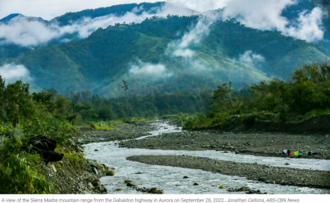
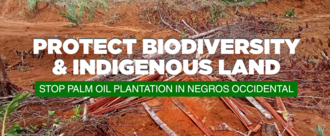.png)
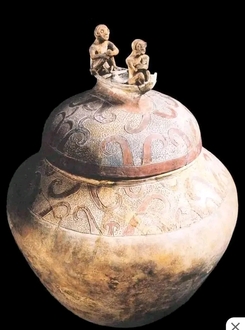
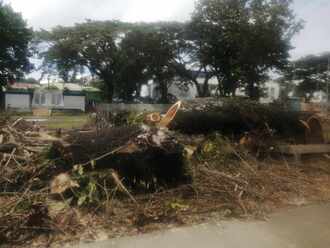
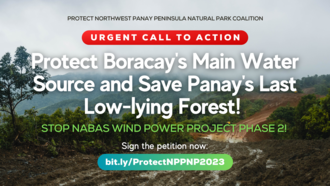
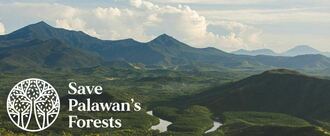
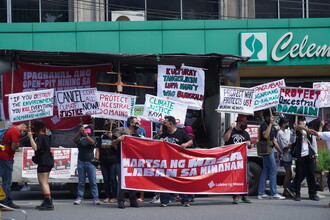
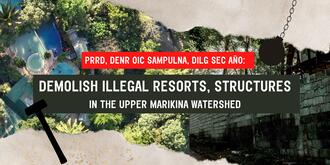.jpg)
